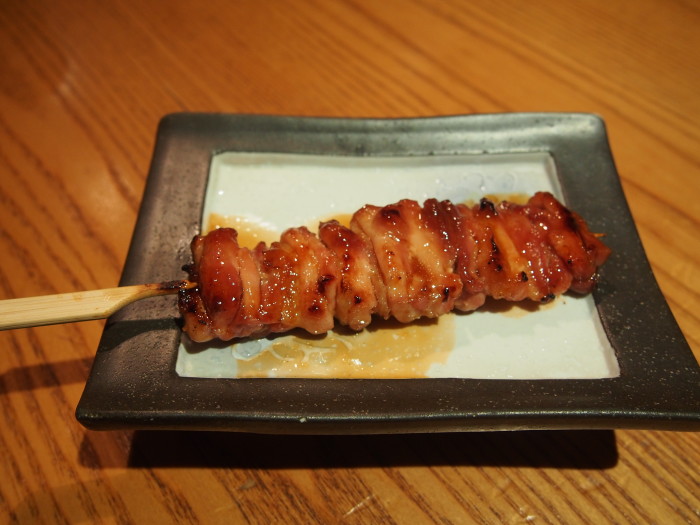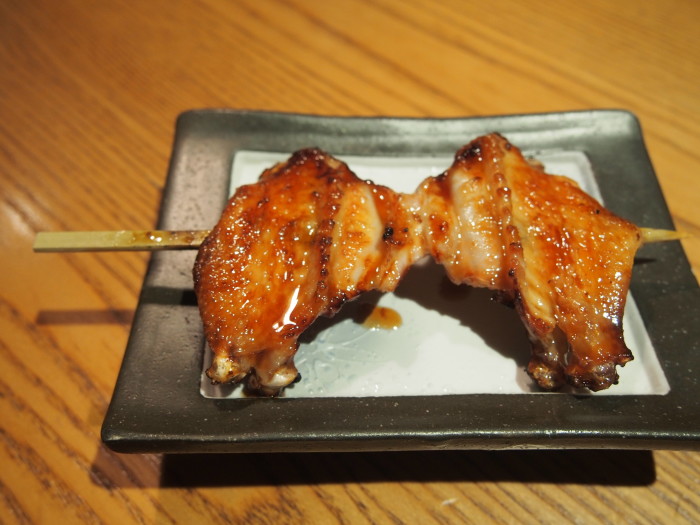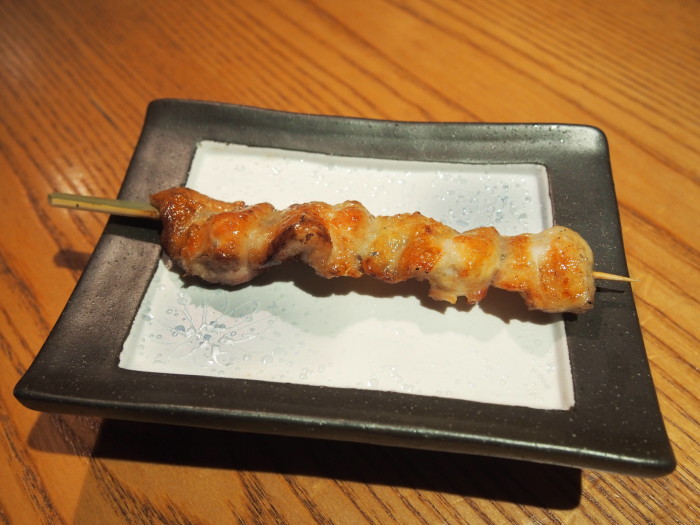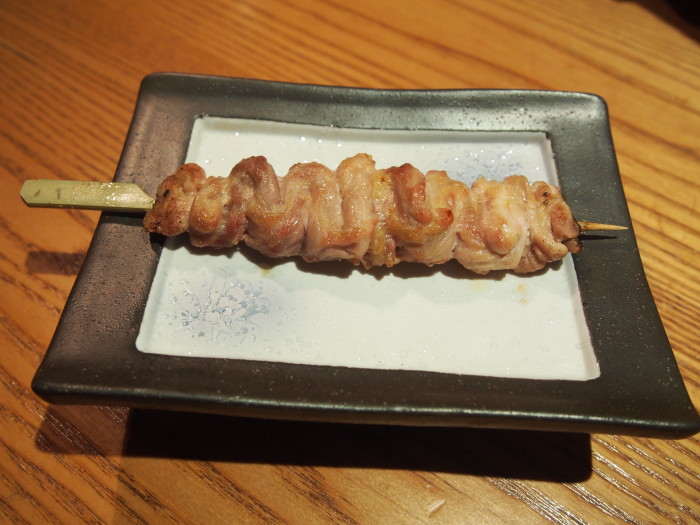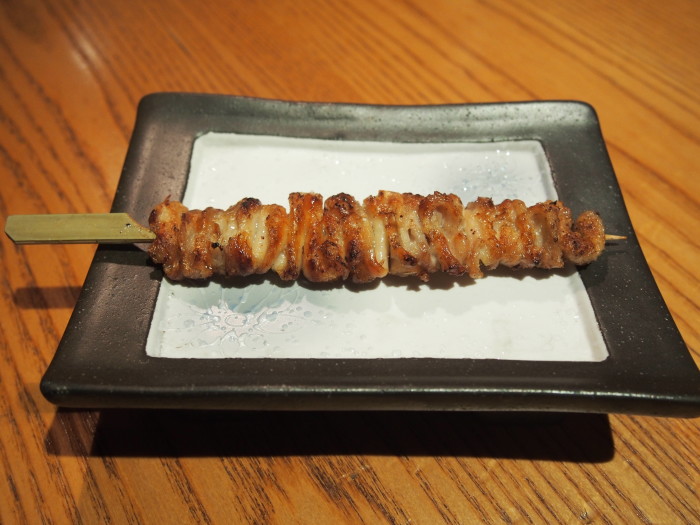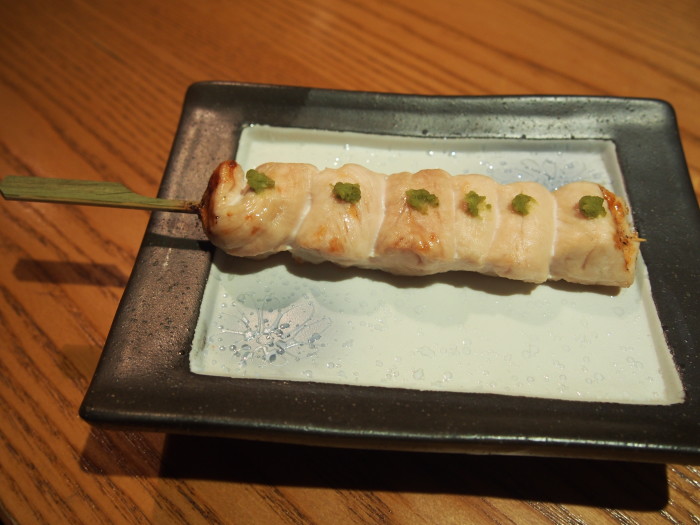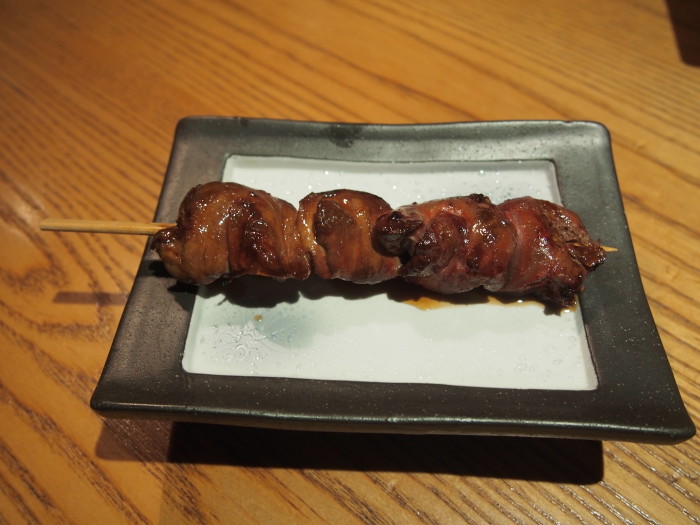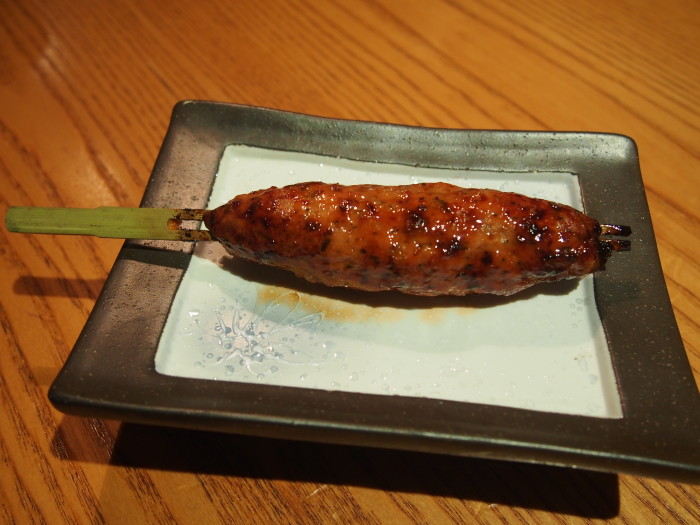A Helpful Guide To Japanese Yakitori
Tomonori Takada is the president of Ootoya America, a restaurant serving Japanese comfort and drinking food, with three locations in New York City. He breaks down the most commonly found cuts of traditional yakitori for us. Look for these skewers — they'll often be seasoned with some type of thick, sweet-ish soy glaze (tare) and salt — at specialty Japanese joints across your city.
Momo
Chicken thigh. Momo means "thigh" in Japanese and is a staple skewer that can be found at most restaurants that serve yakitori.
Tebasaki
Chicken wings. This is one of the most popular yakitori dishes. It's commonly served in pairs on one skewer.
Bonjiri
Chicken tail. A rich and fatty cut, the tail might actually contain the most fat out of all parts of the chicken.
Seseri
Chicken neck. Only a small amount can be taken from each bird, and it has a somewhat uneven texture — it's juicy and fatty, yet can also be firm in places.
Kawa
Chicken skin. It's an especially popular dish in Japan, where it is prized for its high content of collagen.
Sasami
Very lean white meat usually taken from the part underneath the chicken breast. Ootoya tops its version with either wasabi or plum sauce and shiso. (Wasabi pictured.)
Reba
Chicken liver. It's very delicate as the texture changes frequently, depending on how it's cooked. The liver is an excellent source of iron and vitamins. Look for restaurants to serve it marinated in tare sauce and add on toppings like shichimi pepper.
Tsukune
Grilled chicken meatballs. This is where yakitori chefs tend to show off their creativity, by adding chopped cartilage for extra crunch or serving with a raw egg yolk for creaminess, for example. Ootoya mixes shiso leaves into its meatballs.


